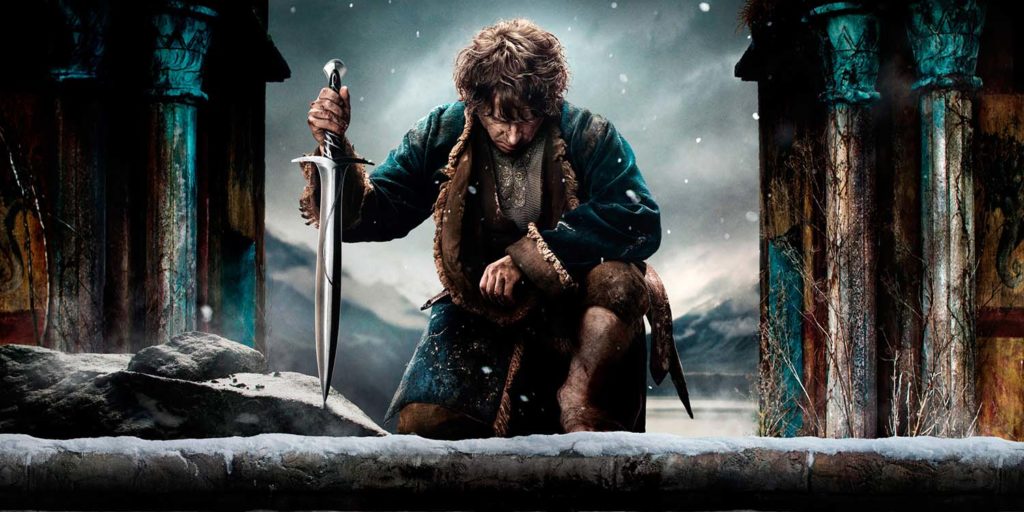An unexpectedly long journey, amirite?

Ah, The Hobbit. That movie trilogy we definitely all remember. The films that put Peter Jackson’s name on the map as a director to be reckoned with, made superstars of its young cast, and skyrocketed the fantasy genre to Oscar glory. Wait… I’m getting it mixed up with The Lord of the Rings, aren’t I?
Terrible jokes aside, the point stands: The Hobbit is a ridiculously unmemorable set of films. Despite its amazing cast (and I’ll maintain that Martin Freeman is the perfect choice for Bilbo Baggins), the movies themselves are just kind of… flat? And I think the main reason for that is that the screen adaptation is just too. Damn. Long.
Desolation of my attention span, more like
The Hobbit, or There and Back Again is one of JRR Tolkien’s most beloved novels. In fact, it’s the book that draws many young readers into the world of Middle Earth in the first place. It’s also a fairly standard length of 310 pages. This, of course, is absolutely fine: some of the best literary works in history have been short and sweet, so no size judgments here! The trouble came when, for reasons I still can’t fathom, director Peter Jackson decided to spin one standard-length novel into the eight hours of feature film that is The Hobbit franchise.
Yeah, you heard me: eight hours. That’s insane! And that’s not counting the extended DVD editions, which clock in at an insanely mind-numbing 512 minutes when combined. Admittedly, that’s only half an hour longer than the original cuts, but boy do you feel it.
Peter Jackson decided to spin one standard-length novel into the eight hours of feature film
There’s just no need for the films to be this long. It makes sense for something like The Lord of the Rings saga. The imposingly large, at times dense novels require a trilogy of three-hour-long epics to do them justice. But The Hobbit isn’t The Lord of the Rings (duh). The screen adaptation doesn’t need the same treatment, and I’m not alone in thinking this.
Battle of staying awake through this snooze-fest
The length of the movies doesn’t do them any favours. Think about it: what actually happens in The Hobbit?
- Bilbo goes on his adventure with Gandalf and some dwarves
- runs into Gollum (because fan service)
- finds the One Ring
- meets a dragon who escapes and burns some people (but they’re not main characters so it’s fine)
- then gets involved in a massive war between five different armies, only two of which we’ve seen before, and another two of which look exactly the same
That isn’t enough material for three super-long movies! Sure, there are some fun moments and decent action scenes, but their entertainment value just isn’t enough to justify eight hours of screen time.
And then there’s also the production cost: The Hobbit trilogy had a combined budget of nearly $800m. No, you didn’t misread that: eight hundred million dollars. That’s crazy expensive! Sure, they raked in the cash at the box office and took around $1bn apiece, but there’s no need for an adaptation of a tiny kids’ book to be this expensive.
Because that’s the thing: The Hobbit is a children’s book. It isn’t supposed to be a grand, sweeping epic like The Lord of the Rings. In trying to make it so huge, Peter Jackson misses the point of the book completely. And sure, he made a hoard of money because of it – but damn, sometimes less is more. A Hollywood Flounder of the highest order!
Now, if you’ll excuse me, I’m going to try and forget about these movies all over again.